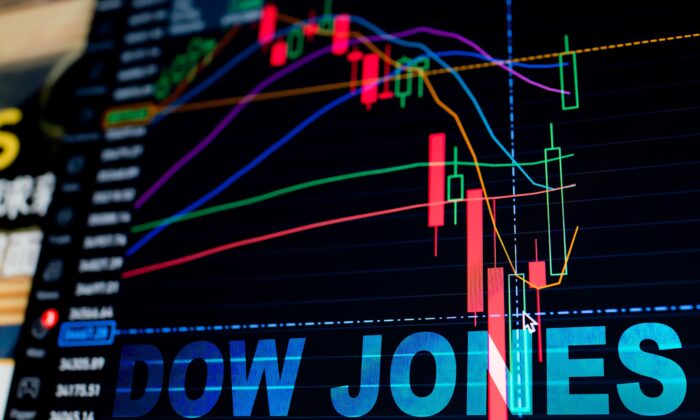In a remarkably dynamic environment for U.S. stocks, the recent market movements underscore the complex interplay of global economic factors. On Tuesday, a notable rebound was observed across major indices, with the S&P 500 rising by 1 percent, recovering from previous losses as falling oil prices alleviated some of the mounting pressures on the market. This shift is particularly significant as it reflects the market’s sensitivity to fluctuations in energy prices, which can heavily influence investor sentiment and corporate profitability.
The Dow Jones Industrial Average also saw a modest increase, climbing 0.3 percent, while the Nasdaq composite led the charge with a more impressive 1.4 percent rise, driven largely by gains in Big Tech stocks. This performance highlights the ongoing dominance of technology companies in the market, where innovation and consumer demand continue to propel growth. According to a recent analysis by investment experts, the tech sector remains a pivotal driver of economic expansion, particularly in the wake of geopolitical tensions and supply chain disruptions.
Despite these positive movements on Wall Street, the global landscape presents a contrasting picture. Stock markets around the world faced turmoil, particularly in China, where investor optimism about potential stimulus measures quickly turned to disappointment. This sentiment was starkly reflected in Hong Kong’s stock market, which experienced its worst day since 2008. Such volatility serves as a reminder of the interconnected nature of global financial markets, where developments in one region can resonate across the globe, affecting investor confidence and market stability.
To provide further context, on the same day that U.S. indices showed resilience, the S&P 500 added 55.19 points to close at 5,751.15, while the Dow increased by 126.13 points to reach 42,080.37. The Nasdaq’s performance was particularly noteworthy, gaining 259.01 points to finish at 18,182.92. The Russell 2000 index of smaller companies also saw a slight uptick, albeit modest, with an increase of 1.89 points.
Examining performance over the week reveals a mixed picture. The S&P 500 inched up by just 0.06 points overall, indicating a week of cautious trading. In contrast, the Dow recorded a decline of 272.38 points, reflecting the challenges faced by larger, more established companies amid shifting market dynamics. The Nasdaq, however, managed to post a small gain of 45.07 points, maintaining its upward trajectory for the year, where it has surged by an impressive 21.1 percent.
Looking at the broader yearly performance, the statistics are even more telling. The S&P 500 is up 20.6 percent, the Dow has risen by 11.6 percent, and the Nasdaq’s remarkable performance this year is underscored by a staggering increase of 21.1 percent. Even the Russell 2000, which often serves as a bellwether for smaller businesses, has seen an 8.3 percent rise, although it lags behind the larger indices.
As investors navigate this landscape, several questions inevitably arise: How will ongoing global economic pressures shape future market performance? What are the implications of falling oil prices in an inflationary environment? Experts suggest that while falling oil prices can provide relief to consumers and businesses alike, they may also signal underlying economic weaknesses that could affect growth in the longer term.
In conclusion, the recent uptick in U.S. stocks amidst a backdrop of global uncertainty exemplifies the volatile nature of the financial markets. As the situation evolves, investors are advised to remain vigilant, closely monitoring both domestic indicators and international developments that could influence market trends. Understanding these dynamics is crucial for making informed investment decisions in an increasingly interconnected world.


